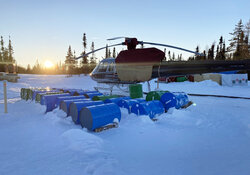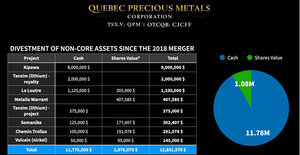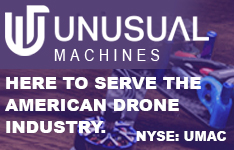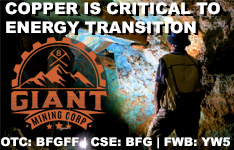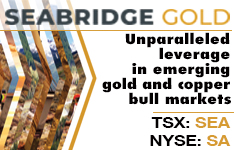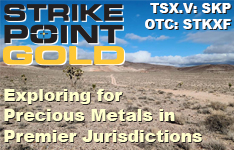TGR: We were talking about all of these wonderful events — the potential depression, the potential Israeli attack, the financial markets going down, and how that will drive gold up. We’ve heard arguments both for holding physical gold as a hedge against inflation, or any kind of catastrophic events, and also as an argument for holding gold equities. What is your viewpoint on owning gold and owning equities?
RW: Both. What I recommend to my traders and readers in our newsletters is to first get rid of debt. After that, make choices regarding owning gold and silver investments and trades.
We suggest American and Canadian silver and gold coins as a place to start first. If you buy physical silver, a pre-1964 junk bag (available in varying amounts) contains circulated coins, providing an opportunity to buy the cheapest amount of silver, getting the most “bang for the buck,” so to speak.
In addition to that, we also recommend gold coins for people who have accounts large enough to afford it. We suggest that 10% of the total amount of cash available for investing and trading could be in coins. That can vary of course. By example, if you have a very large trader, somebody with several million dollars, that number would be proportionately smaller.
The next investment is Goldmoney.com, a bullion bank run by James Turk. That bank is based in London, the Channel Islands and in Switzerland. The Goldmoney.com bank started in 2002, I think Jim told me, with three or four gold bars. Right now they hold nearly $300 million in physical metals for their traders and investors. This is an excellent investment vehicle for retirement accounts. No interest is paid but your account value replicates the bullion value. As gold and silver rise, so does your account.
They have audited insured gold and silver bullion in the banks. You can open an account on the Internet. You can move your money on the Internet in four different offered currencies.
My recommendation right now to our readers is to designate silver located in Zurich. I prefer Zurich over the Channel Islands as I don’t know much about the Jersey Channel Islands. I’m sure they’re fine, or Jim wouldn’t be there.
So, if you’ve got gold and silver bullion in those banks, the price of your account goes up and down, reflecting today’s price of gold and silver. I think that presents a great opportunity and a safe one in my view. We also recommend placing your physical gold and silver coins in your personal possession. Then, of course, another section of trading capital should be allocated to those shares you think have a good chance of making money. We recommend trading futures and options and commodities, using tight risk control for faster appreciation of accounts. We have had an exceedingly good run this year.
TGR: In your newsletter you’re also covering long bond trade options.
RW: We have looked at the options, and we have looked at the spreads. Realistically, from a mechanical standpoint and trading, it’s not a very good thing. Mostly what you have to do is enter two ways — and we have a trade coming in that regard.
The first trade would be to take a small time window in the futures; in other words, take the September 30-year long bond and short it for a gain of a few points, earning $1,000 per point. I haven’t checked margin requirements lately, but it’s about $2,500-$2,800 for each contract. Your margin money stays with you, and you only spend a commission to buy a position, if, in fact, you’re a winner.
A couple of my traders tried it recently — I told one trader the line in the sand on price was 115.00 index support. The support broke; it went down to 114, 113, and then came right back up again. Right now, I think we’re in a bond comeback position as the shares markets are under pressure and traders sell shares to buy long bond security.
So, you get some trading, up and down and sideways before it makes the final larger, selling price move. I am planning to catch the larger selling move, which we forecast lasts for years.
Now, here’s something really interesting. The reason we think this is the trade of the year — and I talked to Paul van Eeden and Jim Turk about this, too — if, in fact you were able to capture the whole trade from 115.00 all the way down to a prospective low of 80.00 on the index, which is quite low, you’re looking at a great deal of money. That’s a potential of $35,000 on one contract going short. Big traders will short bonds with multiple contracts.
Now, in the interim, obviously, there’s going to be bounces, and there’s going to be mini-rallies, and if you’re holding a bunch of these, you will go negative relatively, but if you have the staying horsepower, it’s going to be a wonderful trade.
TGR: The last time we spoke you were making some comments on some specific gold equity companies that were intriguing you. Are you still intrigued by these companies?
RW: Yes. My two favorites are still Canplats Resources Corp. (V.CPQ, PK.CPQRF, F.CPQ, DE.CPQ, BE.CPQ) and Hecla Mining Company (HL). We closed Canplats out recently with a 40% gain for about the third or fourth time. When it comes back a little bit, we will suggest our readers buy it again.
They’ve expanded their position in Northern Mexico and they had 300 square miles. Now, they’ve got a reported 500 square miles of leases. Their drilling program has proceeded nicely with some very, very good numbers. We think CPQ could be a buyout candidate most probably by Goldcorp Inc. (TSX:G, NYSE:GG). Other senior miners are operating in the same neighborhood and would have strong interest as well.
TGR: When you say when it pulls back a little bit, what do you expect it to come back to before you buy again?
RW: Oh, maybe 50, 75 cents. It rallies pretty strongly. When we first became acquainted with CPQ in January, 2008, the stock was 30 cents, and it’s been as high as $4.95, $4.99 recently. We had a sell stop on it, and I think we earned a letter recommendation of $1.30. It’s come back a little bit, but ought to take-off again.
That one is a junior leader in the group of juniors, in my view, and we’ve had a chance to watch it for a few months. We’ve seen some ups and downs, and it just seems to get stronger with each rally. So that should be a very attractive stock.
At Hecla, I know a lot about the company. I have visited with them and I’ve seen some of their properties. It’s an old-line premier company that had some previous problems relative to a South American mine. They had a debt situation and they’ve had some higher expensive employee costs within the Lucky Friday mine in Idaho. It is very important to understand management has solved these things. They’ve also purchased the other portion of Rio Tinto’s interest in a larger mining operation in Alaska. They paid a lot of money for the other half of that partnership; nearly $700mm. But HL has been operating there for twenty years, and they know exactly what they’re doing.
The stock went up to $12; it came back to $8 or $9. I think its back at $8+ right now. That would be a good stock to own, in my view, on our forecast rising back to $12 and even as high as $15.
TGR: In what timeframe?
RW: Here, again, it depends on what’s going to happen this year in the general markets. It could take until the first quarter of 2009 or, the first half of next year. Potentially until May 2009, but a 40% gain on a blue chip mining company like Hecla could be an excellent choice.
TGR: Are there any other new companies that we didn’t speak about last time?
RW: I have one more new one I like, and that is Arch Coal (NYSE: ACI). Coal is definitely in short supply — not from the problem of reserves; they’ve got plenty of reserves — but the problem is they can’t move it fast enough. Transportation with ships, trains and trucks is quite difficult right now, in that load and unload facilities and the amount of rail lines facilities they’ve got for handling the coal are probably where they were 10 years ago. Meanwhile, this market’s grown rapidly, overwhelming ability to transport the materials. They might have a shortfall industry delivery capacity of 15% to 30%. So, the pressure is on. Two years ago in Wyoming, where they mine clean power plant coal, shipping to the eastern US, coal dust had been flying off their unit trains enroute. You have three or four engines pulling 150 to 180 loaded open top cars, and once they get up to speed, coal dust flies off and covers the rail roadbed.
So what happened was they had rainstorms, and the combination of coal dust and rain took out rail support from under a train and rolled it over. That caused a big mess, costing millions of dollars to repair. But they did fix it, and immediately got busy with an expansion in Wyoming. The rail operator put in new load/unload facilities, a third track in Wyoming (they had two) and now they’re running trains at the rate of 70 a day, where they were moving them previously at a rate of about 40 per day. That’s a big increase in transport production.
When that accident happened, there were some eastern U.S. power plants down to a panicky 60-day supply of coal, which, in their view, is critical. Normally, they have a six to eight months' supply on-hand.
China is in an even worse condition right now because they have been building or adding on — believe it or not — one new power plant a week in China, and they now have 32 power plants shut down because there is no coal to operate them. They can’t import and move coal fast enough. And the next thing is — get this — the whole country of China has only a 12-day coal supply. With the Olympics coming, I think that is really scary. I am sure somehow they will divert enough coal for the Olympics region, but that is a pretty crazy situation.
TGR: So this would be a short-term trade, if you’re expecting--?
RW: No, I think Arch Coal is going to be a longer-term trade. It’s the kind of trade for a shorter and longer term. It’s a moving stock being quite active for a larger company. We’ve gotten out of it on profit-taking, in the letter. I think we made like $12 or $13, which was a nice move, but it will come back, and is now starting to take-off again. There’s no let-up on coal demand for years. Investors in the buy and hold longer group would like Arch Coal and will the traders.
TGR: So, in a recession, depression, we’re still going to have to keep these power plants in operation.
RW: Absolutely. It’s a basic requirement for electricity, and power plant operators have proposed over 30 new coal plants in the U.S. The tree-huggers and the greenies don’t want it for pollution reasons, but I expect a lot of them will be built anyway. Some of the older ones have been shut down because they were dirty. Owners will clean them up with scrubbers and other newer technology. These plants are badly needed and coal power plants are one of the faster methods to bring new power on line. Nuclear plants take 15 years from scratch if you can get the permits.
TGR: Well, in your explanation about the supply issue with coal, it’s centered a lot around transportation; wouldn’t transportation also be an interesting investment?
RW: It can be, but the transportation sources pushing this advantage are grain, which is in horrible shape right now with all the floods and bad weather. But coal will help a lot. Grain, coal and base metals-materials are the things strongly supporting transportation.
On the other side, if you own the right transportation stock, it can be attractive. If you get into some of those that involve trucking, I think you’ve got a problem, because diesel fuel is as high as $5 a gallon and many independent truckers have simply shut down, because they just couldn’t afford diesel fuel. They’ve stopped moving anything. They just parked the trucks.
It’s a matter of situating in the right spot. The Transportation Index is beginning to fall down right now, generally as a group, but that has more to do with the trucking part than the rail or shipping part.
TGR: Aren’t the airlines in the transportation there, too?
RW: Yes. That’s right, and you know how the airlines are. I mean that’s a mess. Southwest is the only airline making money right now, and that’s because they were hedging fuel.
Now the interesting thing about gasoline is that it was reported for the last month or so that gasoline demand has fallen about 1.6% nationally in the United States. This indicates drivers are cutting back on trips because of the cost of gasoline. You’ve got two prices that normally track each other; those would be crude oil and gasoline. However, the U.S. refinery shortage is pronounced; consequently, throughput of unleaded gasoline is static. It’s producing wide open, but can’t go any faster.
So, crude oil is backing up, but refined gasoline prices are moving higher. In other words, they’ve got enough oil to feed the refineries, but gasoline is going up because they can’t make any more. They can’t get it through. For the shorter term, gasoline prices are firm and not rising too much.
Crude oil is going higher on declining oil fields, violence and politics. Natural gas is the primary bull market as of July 1, 2008. Also diesel and jet fuel are at a premium due to refinery problems.
The United States is vulnerable because about 40% of our unleaded gasoline is delivered to the U.S. fully refined in tankers. We have to buy it from other nations because the US doesn’t have enough refineries. I think that’s one of the Achilles' heels of the whole energy system.
TGR: What’s causing the lack of construction of new refineries?
RW: Well, it’s been an EPA question and it’s been a return on investment by the oil companies. The oil companies over the past 10, 20, 30 years would be better served by shopping and exploring for crude oil, either buying it from others wholesale, or drilling and finding new sources and delivering it. Margins in the refineries are really not all that good.
Kuwait came to us about a year and a half ago and said, “We’ll build and fund a new refinery in the United States for about $6 billion.” In our infinite wisdom, we rejected it, and so they took it to China, and that’s where it’s going to go. Amazing, isn’t it?
TGR: Yep. The world revolves around us.
RW: I think that’s going to change.
TGR: It’s already changed; we just don’t know it yet.
RW: Yes, you’re right.
TGR: So, Roger, I would assume that you would be negative on REITS (Real Estate Investment Trusts).
RW: Yes, I have been for a long time and was in that business for 25 years, so I know it well.
TGR: What about international REITs?
RW: With international REITs it’s a little difficult to tell because some areas in other parts of the world are still growing rapidly within commercial real estate. Dubai would be one example. India, Brazil, and Argentina are also experiencing building booms.
There’s a few markets out there still doing pretty well, but generally, I think that’s something to avoid, because its so credit dependent and credit is a mess.
Now, the other thing to note is the dollar recently bottomed and popped back up and briefly peaked above 74 dollar index resistance. People thought, “Oh, well, here comes the dollar; everything’s going to be fine.” We totally disagree; it’s going to go down a lot further.
TGR: Yes, which is why gold is going to go up?
RW: Absolutely.
TGR: And I assume you’re bullish on natural gas.
RW: Yes, very much, and we’ve got an open trading spread recommended in our newsletter. I noticed gas went into $13 plus this morning. It’s just starting its larger move and it's going to be a good one.
About Roger Wiegand: In addition to editing and publishing Trader Tracks ( http://www.tradertracks.com), a stocks, futures and commodities electronic newsletter publication for active traders, Roger writes a weekly column, “Rog’s Corner,” for J Taylor’s Gold and Technology Stocks Newsletter. (See http://www.webeatthestreet.com for information on Jay Taylor's and Roger Wiegand's newsletters. Tel: 718-457-1426 Claudio Bassi, Manager cbassi@miningstocks.com.) A native of Michigan, Roger has had an interest in precious metals and futures since the commodity rallies of the late 1970s and early 1980s. His background in a 25-year real estate development and construction career specialized in forward planning, consulting, and using creative skills for conceptual project thinking.
His present work is focused on the precious metals, currency, energy and interest rate markets for trading on the primary American exchanges. Roger has studied these markets intensively for 12 years, to hone personal trading skills. Experience in land, development and base material projects has evolved into consulting for mining companies and analyzing those markets. He has developed longer term ideas for finance and mining marketing doing work on behalf of private and public mining companies. Roger’s consulting work is to focus on concepts and “big picture” forward planning for mining companies. His newsletters utilize the global news, and his personal research and knowledge for expressing personal trading ideas.


